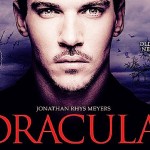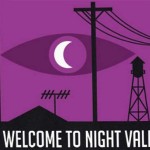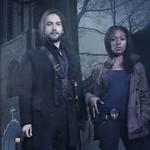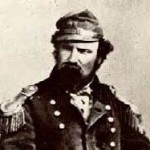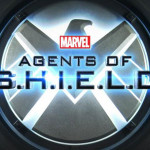Reviewing the new Dracula TV show has been an interesting process for me. If you follow me on Tumblr, then you know that on the night of the series premier I live blogged my sister’s reactions to the show as she live blogged watching it. It was an interesting night that led to my sister repeatedly thumping one of her copies of the original novel on the coach while yelling NO!, and drinking enough that she declared that she could not feel her feet.
After it was over, I declared that I was going to write a full review. However, to be fair to the show, I could not just review the pilot; I needed to watch several episodes in order to do this properly. She said I was braver than she, while clutching her fanged bunny Clovis for support.
So here it is. Fair warning, there will be spoilers, so enter freely and of your own will.
For those not in the know, the new Dracula series is a reimagining of the tale. Still set in Victorian England, the story now has Dracula pretending to be an American inventor and industrialist, named Alexander Grayson, in order to promote a new type of energy. His goal is to undermine the financial might of his ancient enemies, the Order of the Dragon, by reducing the worth of their oil holdings.
I think I pulled something writing that last sentence.
Having watched the first few episodes I have drawn the conclusion that this show was pitched as something other than Dracula and that it was repurposed, probably due to executive demands that it be based on a familiar property.
Of all the characters only Lucy Westenra acts anything like her counterpart in the original novel, and even she has significant changes.
Starting with Dracula, he is far from the monster in the novel, in fact he seems more of the noble monster trope here. He is out for revenge on the Order of the Dragon for killing his wife and turning him into a vampire. The show has also gone with the reincarnated lost love angle that has been used so often it almost seems a must for vampire stories.
Speaking of that reincarnated love, Mina has gone from a school teacher to a medical student studying under Professor Van Helsing.
Her Fiancé, Jonathan Harker, has gone from being a solicitor to a journalist hired by Dracula to investigate his rivals.
Lucy is still a rich high society girl, presented as a Victorian party girl. The one change here is that she harbors secret romantic feelings for Mina.
In one of the biggest changes from the novel, Renfield has gone from a madman whom Dracula enslaves to a trusted manservant who can counter Dracula’s instructions for Dracula’s benefit without repercussions and whose advice Dracula values.
But that pales in comparison to Van Helsing. In the novel he is Dracula’s arch nemesis and in media his name is synonymous with monster hunter. Here he is the one who frees Dracula from his tomb as he also seeks revenge on the Order of the Dragon for killing his family, and needs the vampire as his partner to accomplish this. He even goes so far as to try and find a way to allow Dracula to walk in the daylight.
For the order of the Dragon they are so generic in being bad guys that even reading a synopsis of episodes it is difficult for me to tell who is who.
The one exception is the order’s female vampire hunter, Lady Jayne Wetherby. Not suspecting that Grayson is in fact Dracula she starts an affair with him, while the order wants to ruin him as a business rival. She seems to serve the dual purpose of having a female vampire slayer in the show, and to have a character Dracula can have sex with every episode.
Another issue I have is the anachronisms throughout the show. In 1881, when Van Helsing frees Dracula, he uses a battery powered flashlight. In a scene in 1896 you see Dracula wearing s modern style wristwatch. You also have the female characters wearing off the shoulder dresses to society events. I think a lot of this is due to the show having a very steampunk sensibility, with Dracula as a pastiche of Nikola Tesla and his goal of bringing broadcast power to England. I think more of it is due to the show being more concerned with eye candy than any kind of accuracy.
Overall, this show feels like it was meant to be an entirely original franchise and it had Dracula tagged on for name recognition. The sad thing is I would probably be more tolerant of it, had it been an entirely original idea. One of my biggest issues with it is the complete rewriting of the classic characters. Were Renfield and Van Helsing original characters I would have no problem with their behavior. I would also have been just fine with the struggle between an American industrialist vampire and a Victorian secret society were the industrialist not Dracula.
Also, not everything is terrible. The production designs and cinematography are both terrific. The show looks incredible.
In the end, this is a show that could have been great, had they made it anything other than Dracula. As it is, I cannot get past that fact as it is too distracting.
I give Dracula a D on the Fanboy News Network grading scale. It is a very disappointing effort.

